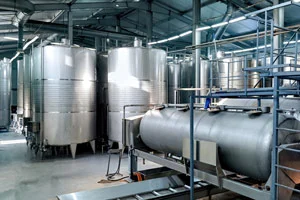What will the wine trends be in 2022?
Covid-19 has had a negative overall impact on wine sales in 2020, showing a drop in sales of 14.2%, with sparkling wines (associated with celebrations) being the most affected.
Wine consumption forecasts for 2022 are optimistic, eyeing new opportunities, as noted in the report on wine consumption in 2020 of the International Organization of Vine and Wine (OIV) and the report of the Strategic Research Centre of the 2021 wine sector of the EAE Business School.
2020: A year of great uncertainty, marked by Covid-19 and online sales.
Restrictions in the HORECA channel, due to the coronavirus health crisis, have increased the wine stock held by the wineries.
Only those wineries that were very well positioned and had good means to reach the customer through the Internet have been able to “save” themselves.
The wine sector is usually quite reluctant to change, and Covid-19 has forced it to react.
As if that were not enough, 2020 has not only been marked by Covid-19, but also the complicated harvests of some regions of Spain due to heavy rains, hail and mildew. So wine production has been lower than recent years.
Digitization has become essential
Sales during 2020 have been mostly online, which has forced the wine sector to implement marketing and sales strategies. While the country was confined, numerous online tastings began on social media, with wines that were bought through the internet and delivered to customers’ homes. But this, as I said before, only happened with those wineries that were well-positioned in the online world.
This 2021 and 2022, the sector is focusing on recovering the normality of wine consumption, adapting consumption habits and implementing marketing strategies and improving communication to reach Millennials.
Let’s start by looking at some important data:
- Wine production in the EU has declined in recent years, mainly due to the climate (frost, hail, drought, etc.). This poses a great challenge for viticulture in the coming years.
In 2020, Italy (47.5 mhl), France (42.1 mhl), and Spain (33.5 mhl) all suffered a decrease in wine production, with Spain being the most affected (producing 25% less). This decrease in the production of Spanish wine is also linked to the decrease in the vineyard area for wine grapes of 949,565 ha, 3,263 ha less than in 2019. Of these 945,565 hectares, 59% or 564,193 hectares (-0.4%) are rain-fed and the remaining 41%, or 385,372 hectares (-0.3%) are irrigated. Only La Rioja and the Basque Country have increased in size since 1980.
- Due to COVID, wine consumption worldwide has dropped 3% (the lowest level since 2002).
- 2020 has been a year in which digitization has become the way to “survive” the health crisis, and wine sales have also focused on online sales. In the US, 26% of those surveyed by Statista have changed their way of buying food and drink, from offline to online. In the UK 25%, and in China almost 50%.
- Sales of vermouth and fortified wines grew by 4%, both in domestic and international sales. The export of sherry wines in Great Britain is growing. In March 2020, in the midst of the pandemic, there was a 20% increase in sales of sherry wines in Great Britain. According to “The Guardian”, online searches for “cream sherry” increased by 850%, and for “amontillado” by 512%.
- The second greatest wine-exporting country in the world is Spain, with a volume of (21.3 mhl), preceded by Italy (21.6) and followed by France (14.2 mhl). But Spain is third in value (2.7 billion euros), also trailing France (9.8) and Italy (6.4).
- In 2020, wine exports closed with decreases of -3.6% in value and -6% in volume compared to 2019, according to OeMV. Sales amounted to 2,012 million litres, worth 2.616 billion euros. In absolute terms, 126.8 million litres were not exported and 96.7 million euros were no longer invoiced, a drop of 53.6 million euros.
2021 and 2022: Optimism in the sector
2020 was the perfect storm for the wine sector to completely change its sales strategy. Now more than ever, we must focus on digitization, new trends and how to reach the “millennial” customer (for example, through social networks, especially on Instagram).
What are the new trends?
- More sustainable wines
Organic wines are treading heavily, and more and more wineries are opting for more sustainable production, with fewer chemicals added.
- White wines and vermouth for aperitifs
It is increasingly fashionable to enjoy a glass of wine for the aperitif, which is gradually gaining ground on beer. For this occasion, we are looking for refreshing white wines with low alcohol content, such as sparkling wines and vermouth.
Drinks with wine such as vermouth or sangria are seeing sales increases of 16.7%. This is because they are perceived as healthier and are also “in fashion”.
- Organic, natural and biodynamic sparkling wines
Sales of sparkling wines in general have fallen, however this has not been the case for organic or biodynamic sparkling wines. This again reflects the tendency to opt for wines made with fewer chemicals added.
Covid-19 has created a rapidly changing landscape for the coming years, in which wineries must adapt as quickly as possible to new challenges in order not to lose their turnover.


